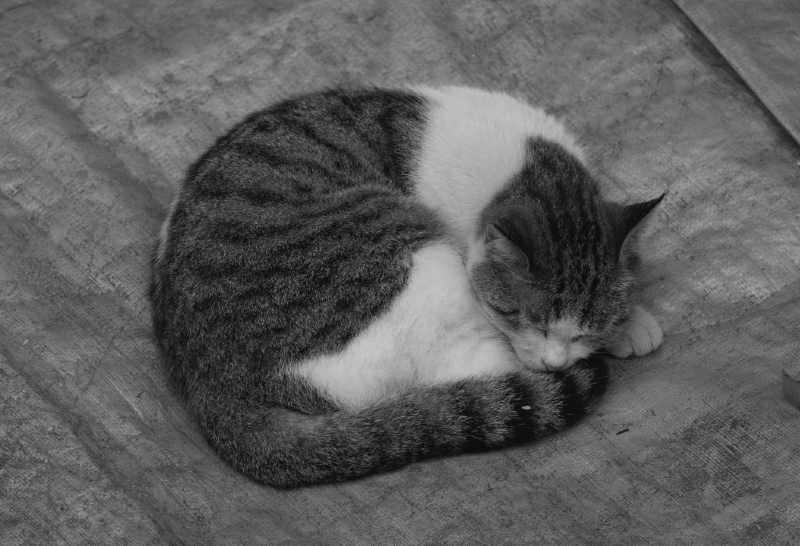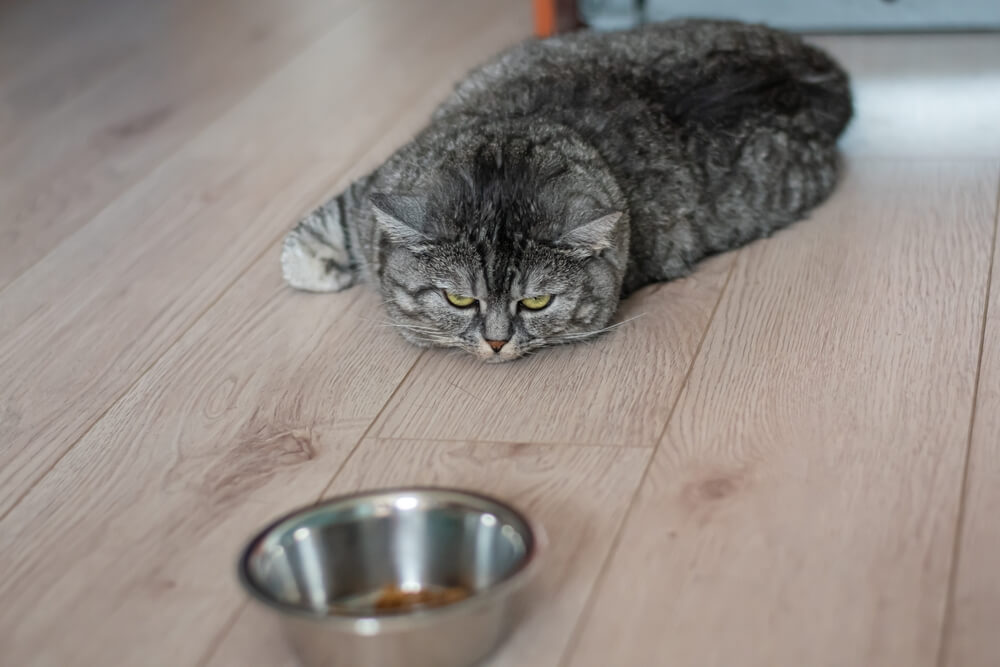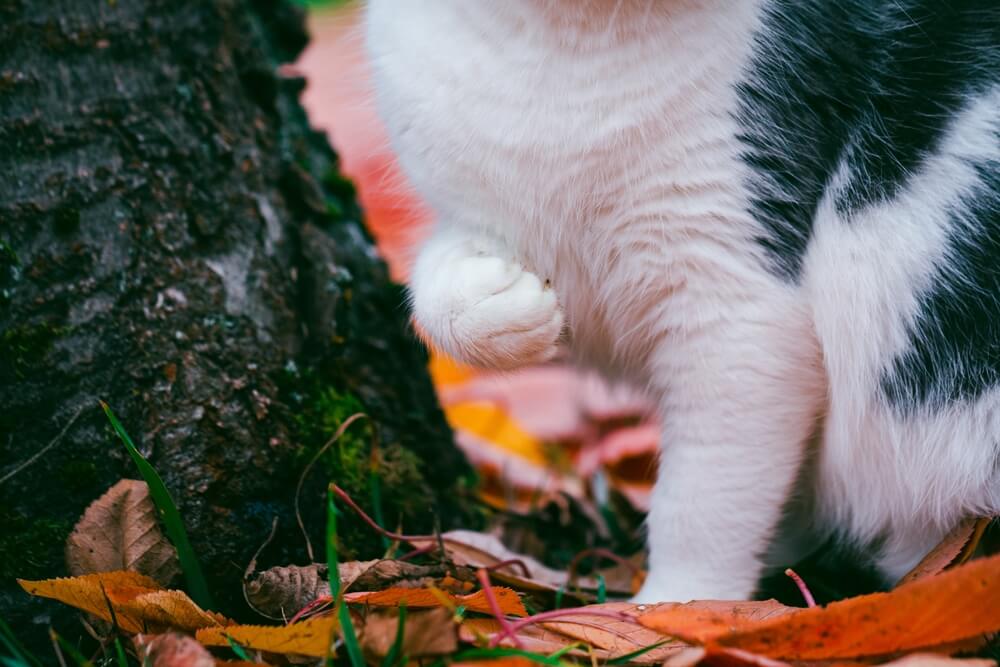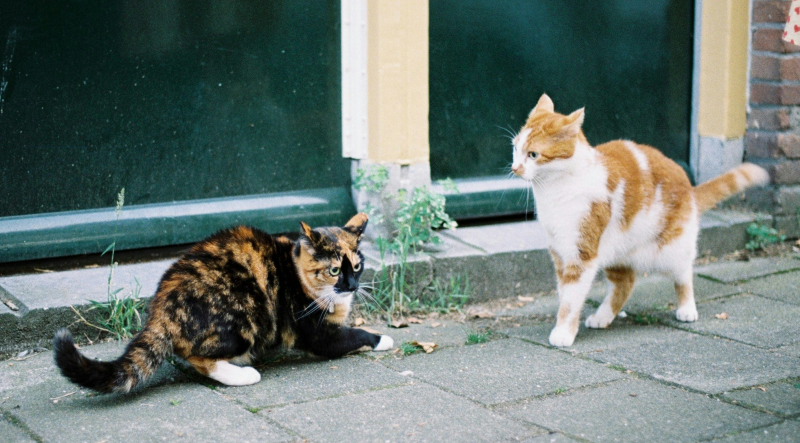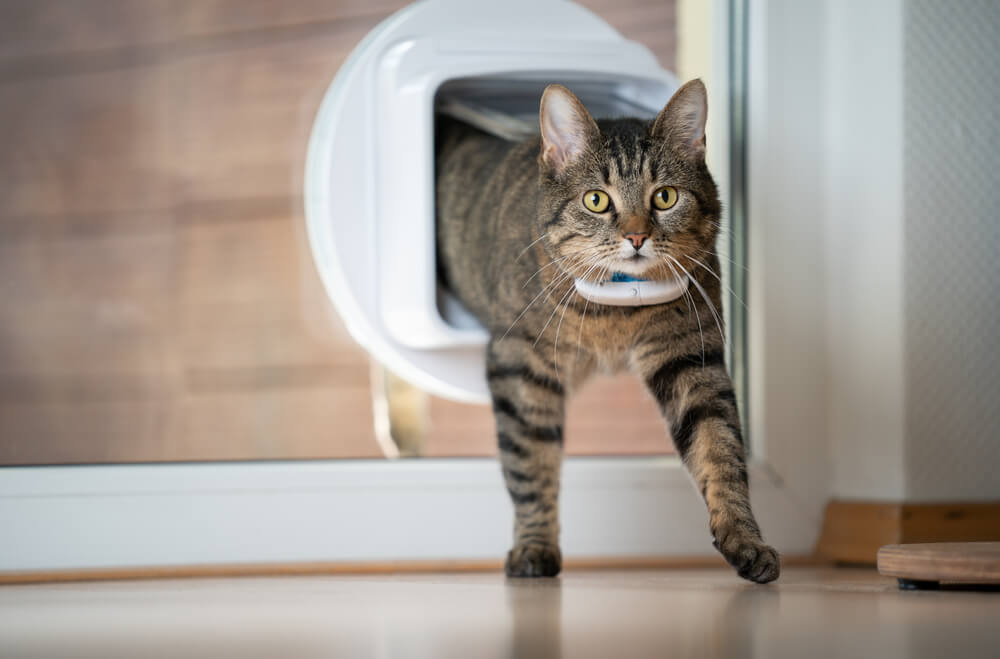
As much as your cat loves the cuddles and toys you provide for them in the home, most cats will still want the rush of adventure in the outdoors. Cats are curious creatures after all and there’s a whole world of smells and noises to be explored each day.
However, as much we encourage our cats to explore, it can be quite annoying to constantly open windows and respond to scratching doors upon your cat’s return. Wouldn’t life be easier with a smooth escape and exit via a cat flap?
Cat flaps can provide your cat with freedom without disturbing the family or causing draughts throughout the house. And, if teaching your cat to use is putting you off the idea, this article will teach you everything you need to know about training your cat to use a flap.
Should I have a cat flap?
A cat flap is a great idea and as long as they are microchipped, it allows your cat to explore the great outdoors hassle-free. Cats like to feel in control of their environment and having to ask every time they feel the urge to leave the home may irritate them. Giving your cat the option to leave and enter when they please is likely to relax them a little more and put them at ease.
Can other animals enter the cat flap?
A cat flap sounds great, but wait, can’t other cats and unwanted vermin enter your home? Thankfully, most high-quality cat flaps are designed to seal tightly to prevent insects, rodents, and other animals from entering your home. However, it’s a good idea to take some measures to avoid unwanted visitors (just in case):
- Lock the cat flap at night as the majority of potential visitors will be nocturnal — we are sure you don’t want to wake up to a new wild furry family in the kitchen.
- Keep food and water away from the door, especially so if a visitor does come in, they won’t stay.
- Don’t encourage neighboring cats by feeding or giving them lots of attention, they may confuse this as an invite to your home.
If you are still worried about other animals entering the cat flap, you may consider a smart or magnetic cat flap that links to your cat’s collar meaning no other creature can use the flap but your cat.
Is the cat flap the right fit?
Before purchasing the cat flap, measure your cat’s height and width (allowing for future growth), and make sure you get the correct flap for fit. A pet store member of staff will be happy to help ensure you purchase the right size and advise on installation.
How to train your cat to use a flap
Teach your cat they can enter and exit the house via the cat flap
Introduce your cat to the flap, they might be immediately confused or if they are playful, jump right through. Hold the door open or remove it entirely and let your cat sniff it out. It’s important not to push or force your cat through the flap, this will scare them and put them off using it.
Rub your cat’s scent on it
Some cats dislike cat flaps because they see them as unusual objects. You can help them become more familiar with the flap by rubbing their scent on it. This will make them more comfortable with the device.
Teach your cat to push open the cat flap
Like most training, the treat method works a treat.
- With your cat on the inside and you on the other side of the door, keep the flap open so they can see you.
- Show your cat the treat and encourage them to come through. If they don’t move, put your hand through the cat flap and once they move towards their reward, retreat your hand slowly so they have to move through the flap to get the treat.
- Praise them when this happens and give them more treats (although keep in mind their daily intake).
- Do the same process with the treat but from the other side, encouraging the cat back into the house.
- Once your cat is happy jumping in and out of an open cat flap, repeat this process with the cat flap half-closed and only your hand poking through. This will teach the cat to push the cat flap open by themselves.
Why won’t my cat use the cat flap?
Of course, this may sound like an easy method and while some cats do take to cat flaps quickly, other nervous and cautious cats may take a little more time.
Having patience with your furry friend is essential as most cats will eventually learn to use the door unless they physically are unable.
It’s important not to give up and open the door, keep encouraging them to enter via the flap and they will soon learn to love the freedom.
We uphold the highest editorial standards when creating the authoritative content pet parents rely on and trust.
Every piece of clinical content on the Cat Food Advisor is reviewed by our certified Veterinary Advisory Board, which consists of licensed veterinarians and medically certified specialists.
Our reviews are completely independent; we are not paid by any pet food company to promote their products favorably. We do not accept money, gifts, samples or other incentives in exchange for special consideration. For more information see our Disclaimer & Disclosure page.




